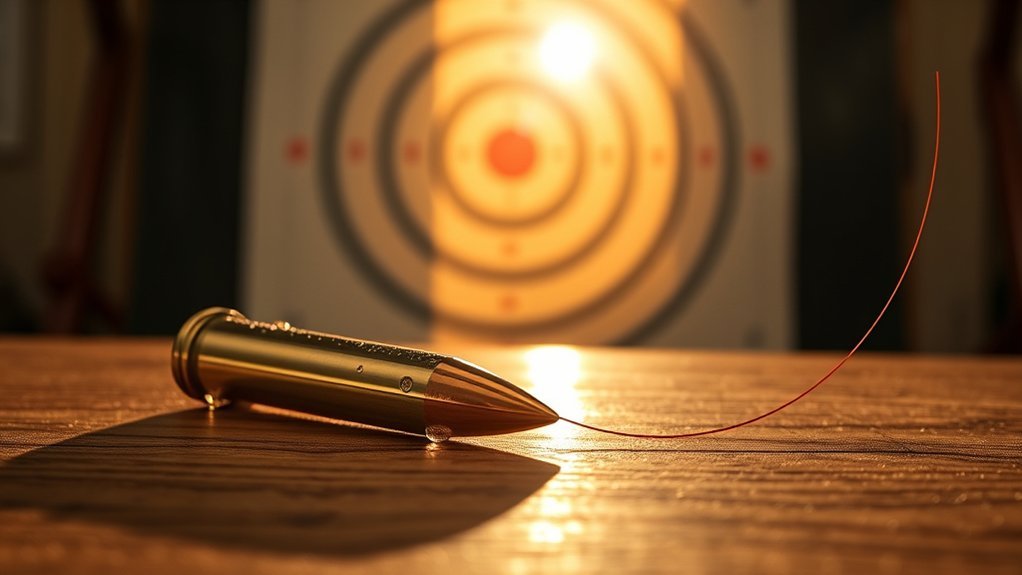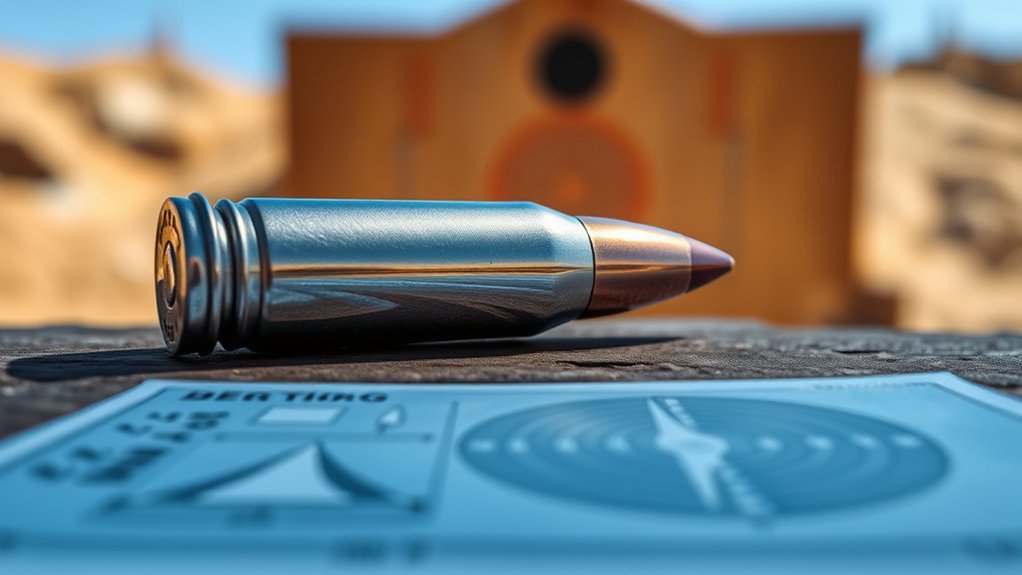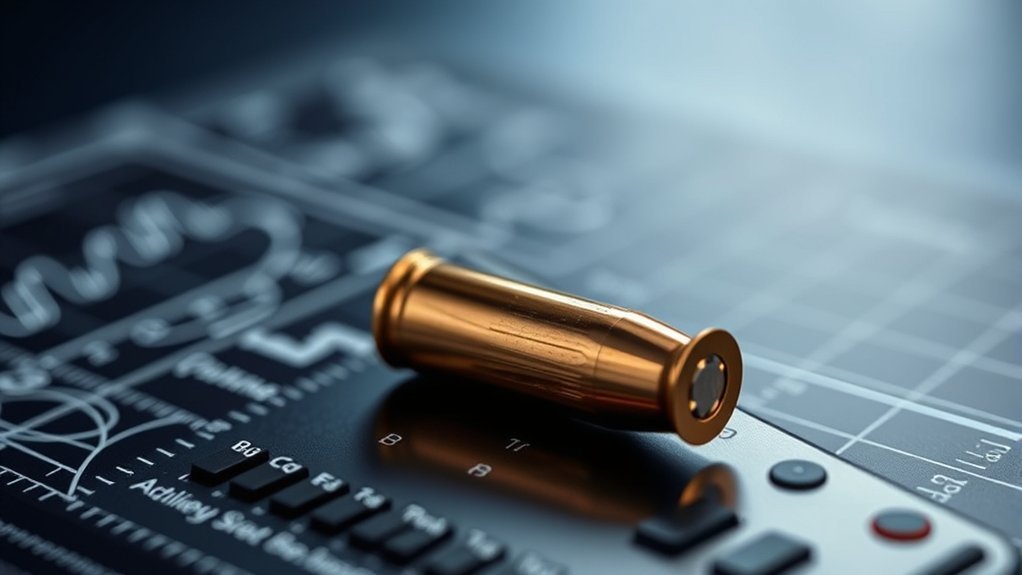When it comes to shooting, understanding the ballistic coefficient (BC) is essential for optimizing your performance. BC quantifies how effectively a projectile can navigate through the air, balancing mass against drag. A higher BC can lead to more accurate shots over longer distances. But what exactly influences this important metric? Exploring the factors that determine BC can greatly impact your ammunition choices and overall shooting success. Let’s break it down further.
What Is Ballistic Coefficient?

The ballistic coefficient (BC) is an essential measure that quantifies a projectile’s ability to overcome air resistance during flight. It’s defined as the ratio of a projectile’s mass to its cross-sectional area, incorporating the drag coefficient. When you analyze BC, you’ll notice that higher values indicate better aerodynamic efficiency, meaning the projectile maintains velocity over longer distances. This efficiency is important for applications ranging from military munitions to sport shooting. To calculate BC, you can use the formula: BC = (weight in pounds) / (cross-sectional area in inches squared × drag coefficient). Understanding BC allows you to predict trajectory behavior, optimize ammunition selection, and enhance overall performance, ensuring your projectiles perform reliably under varying atmospheric conditions.
The Importance of Ballistic Coefficient

Understanding the importance of ballistic coefficient (BC) can considerably enhance your shooting accuracy and effectiveness. A higher BC means your projectile will maintain velocity and energy over distance, which is vital for long-range shooting. Here are four key reasons to appreciate BC:
Understanding ballistic coefficient (BC) is crucial for improving long-range shooting accuracy and effectiveness.
- Trajectory Stability: A high BC reduces drop, allowing for a flatter trajectory.
- Wind Resistance: Better BC means less drift from wind, aiding in precision.
- Energy Retention: Projectiles with higher BC retain more energy, improving terminal performance.
- Range Estimation: Knowing the BC helps you accurately calculate bullet drop and windage adjustments.
How Ballistic Coefficient Affects Performance

Ballistic coefficient greatly influences how a projectile performs in various shooting scenarios. A higher ballistic coefficient means your projectile will retain velocity better, resist wind drift, and maintain a flatter trajectory. This results in improved accuracy at longer distances. Conversely, a lower ballistic coefficient can lead to decreased effective range and increased susceptibility to environmental factors. Understanding these differences is essential for optimizing your shooting experience.
| Ballistic Coefficient | Performance Effect | Distance Impact |
|---|---|---|
| High | Better stability and accuracy | Extended range |
| Medium | Balanced performance | Moderate range |
| Low | Increased drift and drop | Shortened effective range |
Factors Influencing Ballistic Coefficient
While various factors contribute to a projectile’s ballistic coefficient, its shape and mass are among the most critical. Understanding these elements helps you evaluate a projectile’s performance in different conditions. Key factors include:
- Shape: Streamlined designs reduce drag, enhancing the ballistic coefficient.
- Mass: Heavier projectiles tend to maintain velocity better, positively influencing the coefficient.
- Diameter: A larger diameter increases drag, potentially lowering the ballistic coefficient.
- Material: The density and consistency of the material can affect both weight and aerodynamic properties, impacting performance.
Choosing Ammunition Based on Ballistic Coefficient
When selecting ammunition, it’s important to contemplate the ballistic coefficient, as it greatly influences a projectile’s performance over varying distances and environmental conditions. A higher ballistic coefficient indicates better aerodynamic efficiency, allowing for flatter trajectories and reduced wind drift. This is particularly vital when engaging targets at long ranges, where even minor deviations can impact accuracy.
Consider your specific shooting scenario—hunting, target shooting, or tactical applications—and choose ammunition that aligns with those requirements. For instance, if you’re shooting at extended distances, opt for rounds with high ballistic coefficients to maintain energy and accuracy. Conversely, for short-range engagements, the differences in ballistic performance may be negligible. Ultimately, understanding and applying this knowledge will enhance your shooting effectiveness.
Conclusion
In the world of shooting, think of the ballistic coefficient as a sleek sports car cutting through the wind. Just like a car’s aerodynamics determine its speed and efficiency, a bullet’s BC dictates its flight path and accuracy. By understanding and choosing ammunition with a high ballistic coefficient, you’re not just picking bullets; you’re optimizing your performance, ensuring that every shot you take is as precise and effective as possible. Embrace the science, and let your skills soar.

